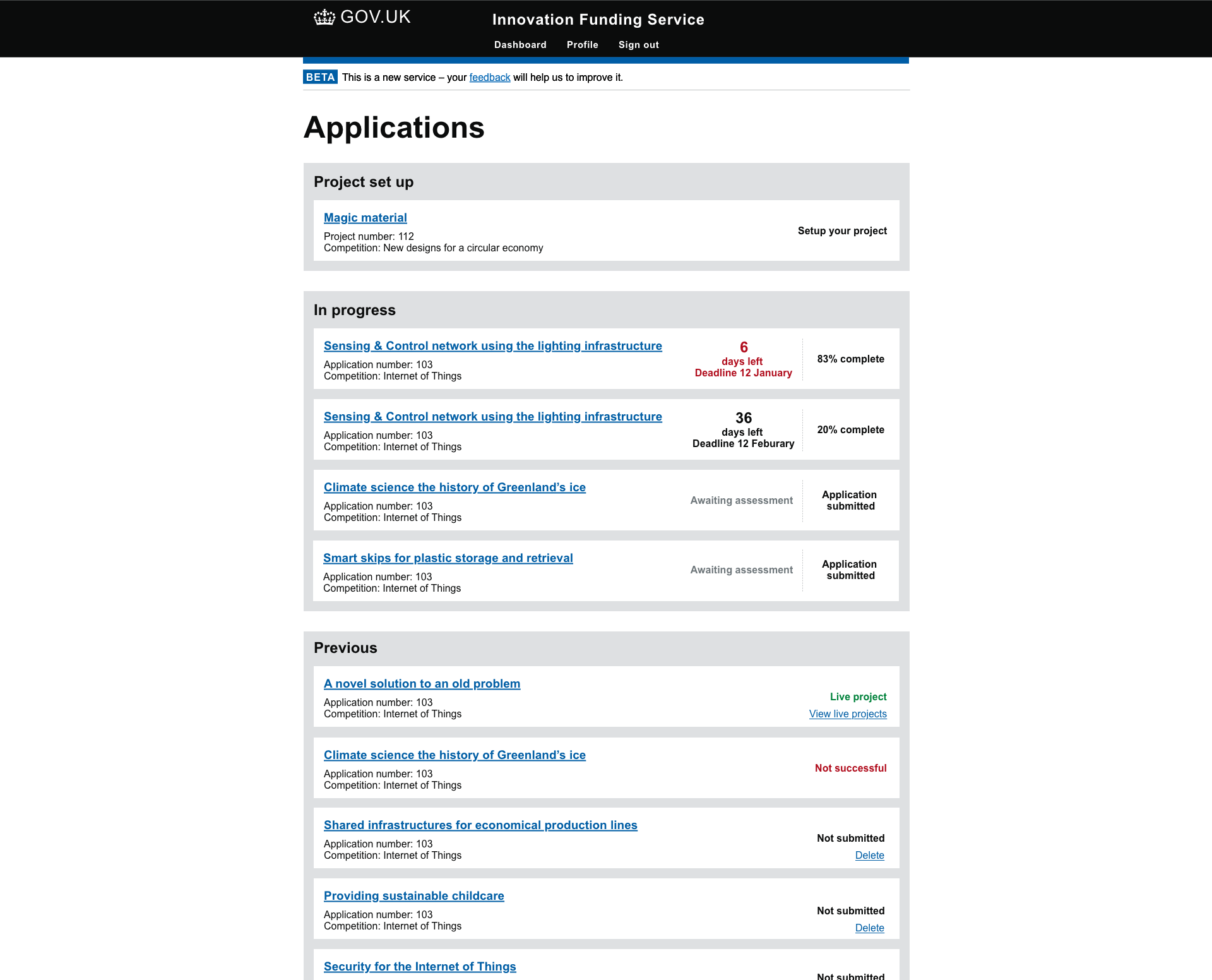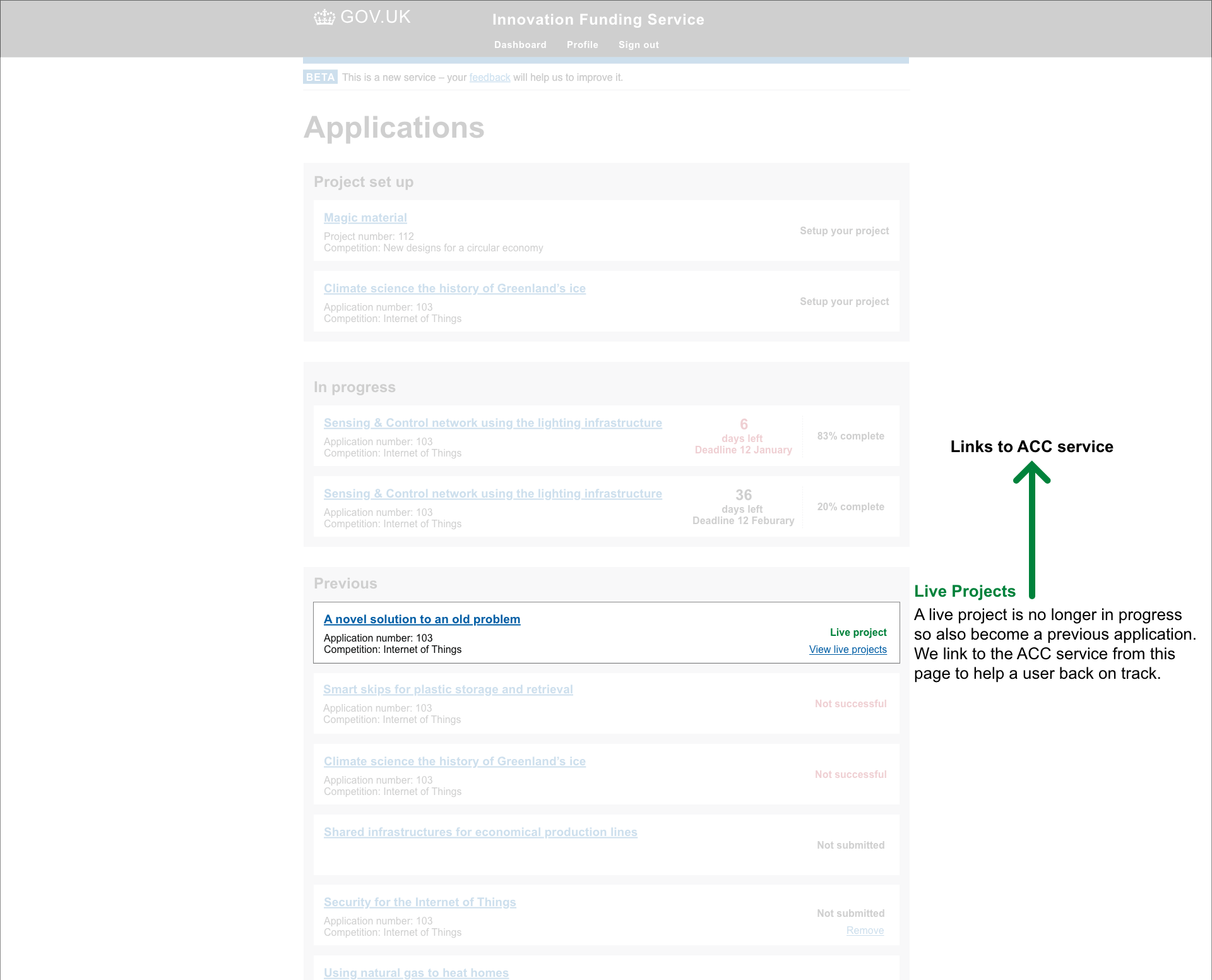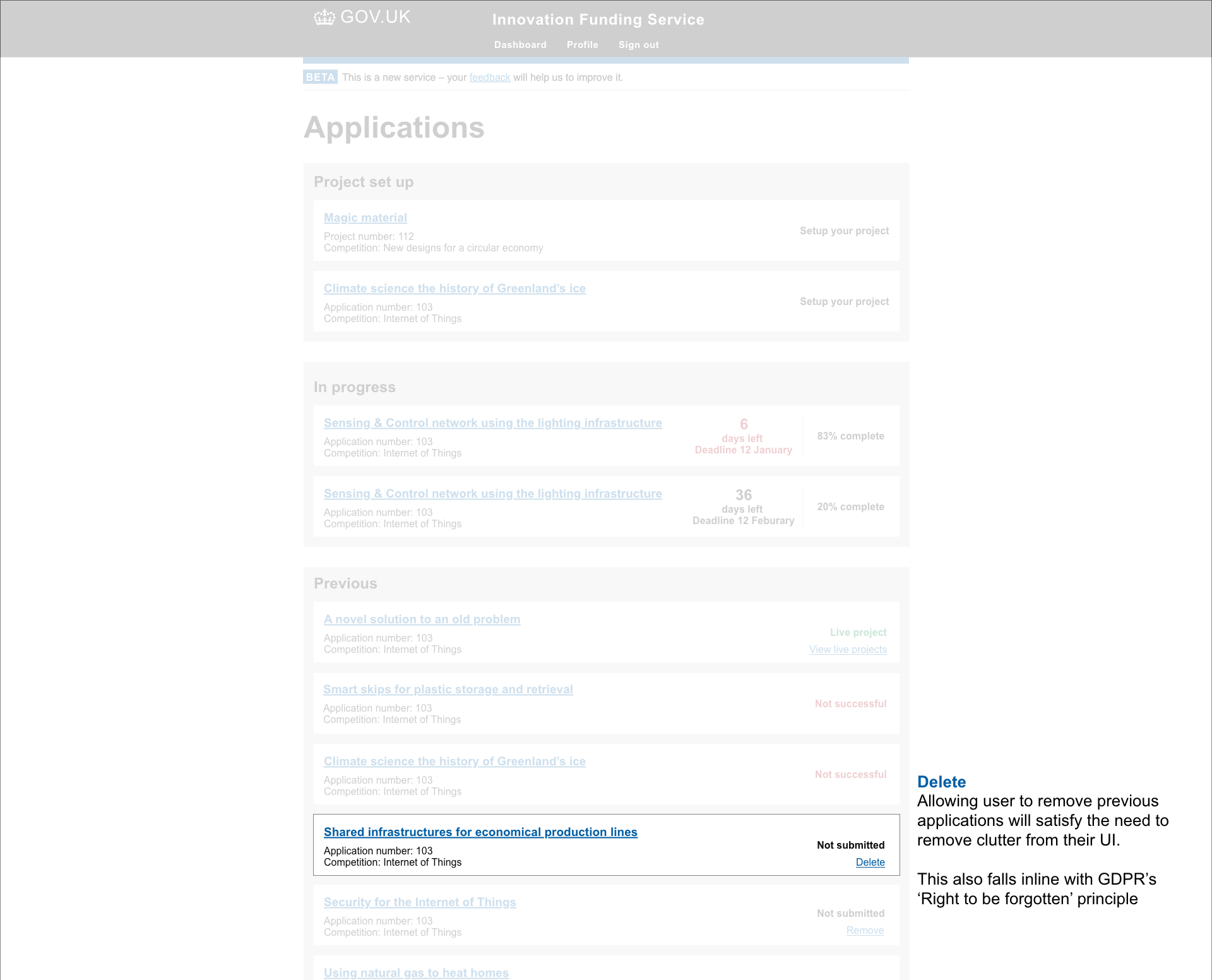Case Study: Redesigning the External Users Landing Page for the Innovation Funding Service (IFS)
Problem Overview Through continued feedback collected via the helpdesk (customer support), it became evident that external users of the Innovation Funding Service (IFS) were encountering several critical issues. Users were losing track of applications and projects, failing to submit before deadlines, and missing key outstanding tasks. These challenges often resulted in frustration and inefficiencies for both users and internal teams.
Users frequently requested new features to mitigate these problems. Tasked with investigating the root causes, I conducted user interviews to explore the issues further. My hypothesis was that these problems were interlinked and stemmed from a broader systemic issue.
Discovery and Root Cause Analysis
Using a root cause analysis approach, I identified that the system prompts, combined with the poor design of the homepage, were the primary contributors to the challenges faced by users. Key issues with the homepage included:
Cluttered Information: The homepage was overwhelmed with data, making it difficult for users to identify and prioritise tasks.
Repetition of Projects: Duplicate project entries confused users and contributed to the noise.
No Task Prioritisation: Tasks lacked clear indexing or prioritisation, leaving users unsure of what required immediate attention.
Inability to Manage Data: Users were unable to archive or delete outdated data, further exacerbating the clutter.
Unclear Labelling: Labels and prompts were ambiguous and prone to misinterpretation.
Initial Actions
The first step was to map the flow of data throughout the system. This holistic view revealed opportunities for quick wins, such as improving content clarity and simplifying navigation. I also proposed enabling users to manage their own data by allowing them to delete or archive information, which would reduce noise and align with GDPR principles, particularly the “Right to be Forgotten.”
Although introducing data management functionality posed challenges in prioritisation, I successfully convinced decision-makers by presenting conclusive evidence of its necessity and its potential to enhance user experience and GDPR compliance.
A process flow visualising the as-is for the homepage user iterface
Redesign Approach
With the root causes identified, I set out to redesign the flow of data within the service and create a more task-focused user interface. Key steps included:
Workshops and Card Sorting: I conducted workshops with key user groups (small, medium, and large businesses) to validate assumptions and gather insights. These sessions included card-sorting exercises to understand users' priorities and how they preferred to manage their tasks and data.
Physical workshops were held for in-depth discussions.
A quantitative digital survey using a UX research card-sorting tool was distributed for broader feedback.
Iterative Design: Feedback from these workshops informed iterative improvements to the design, particularly around labeling and system prompts.
Prototyping and Testing: I developed prototypes of the redesigned homepage and conducted usability testing to refine the task-based workflow.
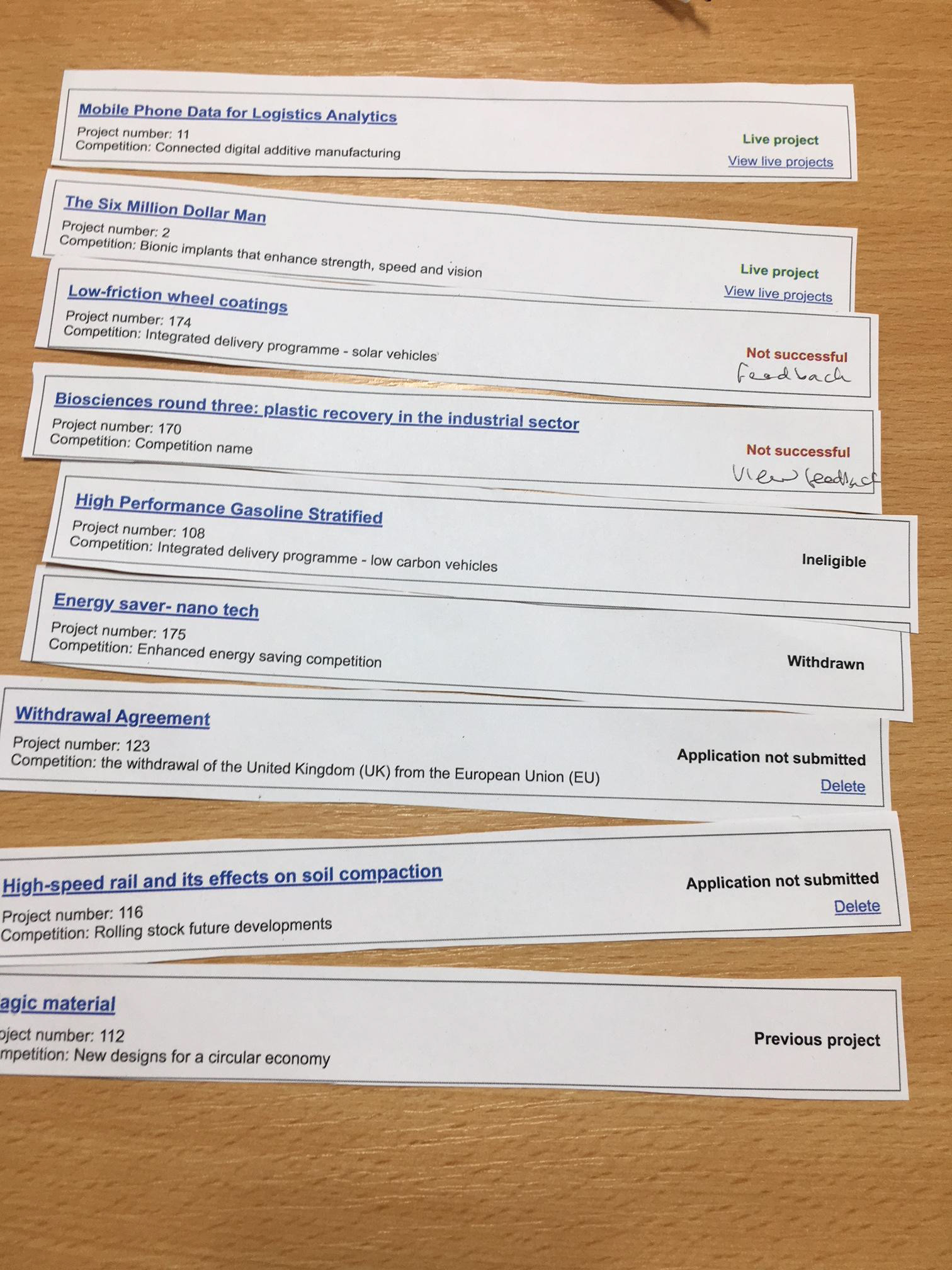
A photograph from the workshop showing a completed card sort
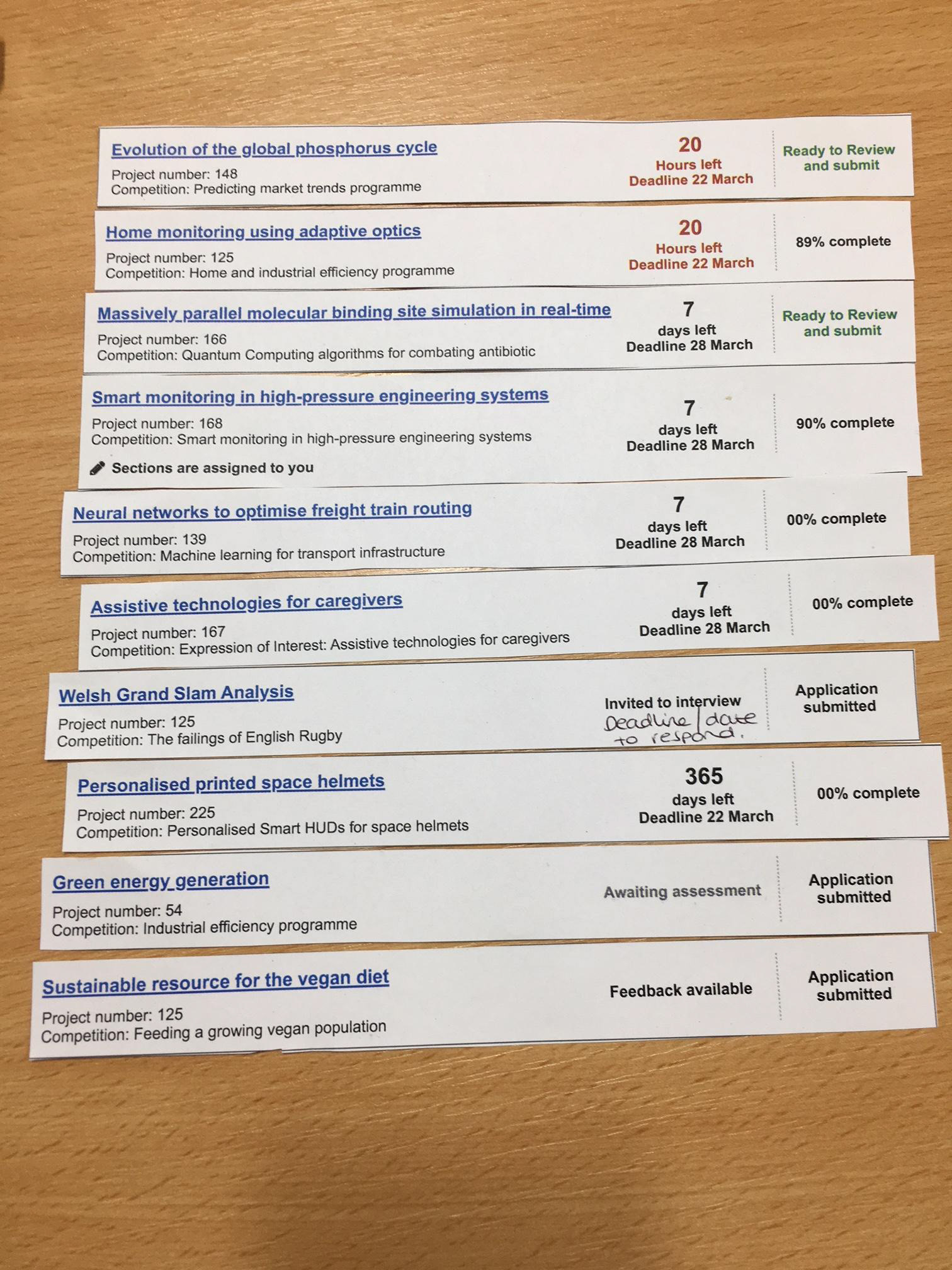
A photograph from the workshop showing an annotated card
Outcome
The redesigned homepage significantly improved the user experience. Key results included:
Reduced Helpdesk Queries: Following the implementation, helpdesk queries related to these issues dropped substantially.
Increased Task Completion: Data showed a marked increase in the completion of outstanding tasks, which allowed internal operations teams to process data more efficiently.
Improved User Satisfaction: Users reported a better ability to manage their projects and tasks, thanks to clearer prompts and an intuitive interface.
Conclusion
This project demonstrated the importance of taking a holistic view of systemic problems and the value of root cause analysis. By involving users throughout the design process, we were able to deliver a solution that not only addressed their pain points but also improved operational efficiency. The success of the redesigned homepage highlights the critical role of user-centered design in creating impactful and sustainable digital services.
